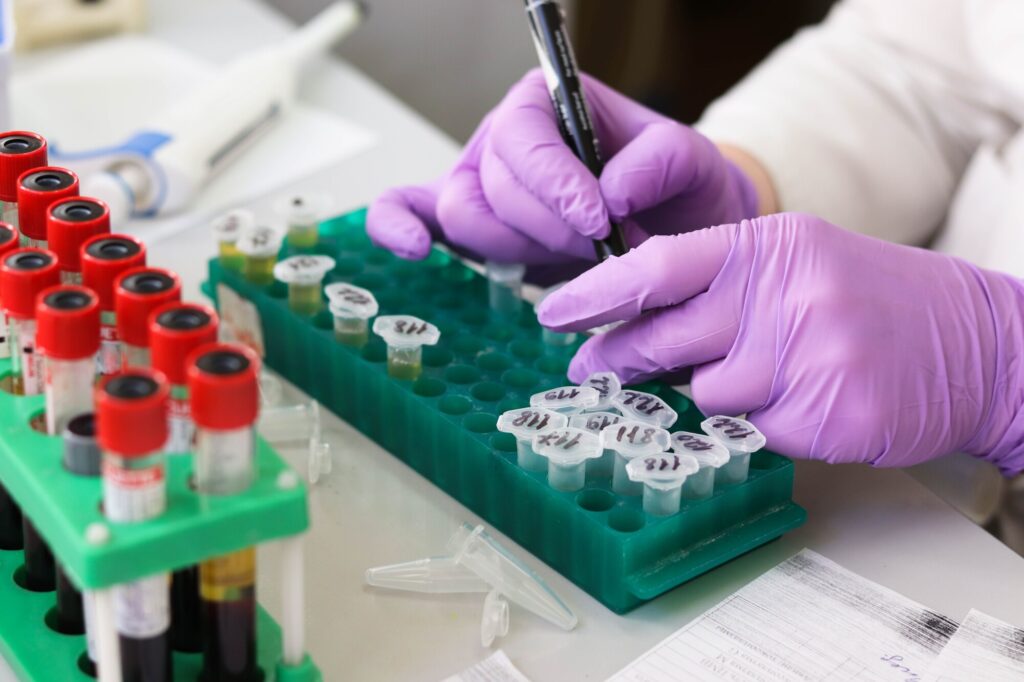7 Things You Need to Know About an Iron Panel Blood Test

The US Food and Nutrition Board recommends 8 mg and 18 mg of iron per day for men and women over 19, respectively. If you are pregnant, that recommendation increases to 27 mg of iron per day.
If your doctor suspects you are not getting enough or too much iron, they may recommend an iron panel blood test. These tests identify levels of iron in various parts of your body.
What exactly does an iron test look for, and how do you interpret the results when you get them back? We answer these questions and more in this guide to the 7 things you need to know about iron blood tests.
1. An Iron Panel Tests for Iron in the Blood
An iron panel blood test measures the volume of iron in your system. Iron is an essential mineral we get from eating red meat, fortified cereals, and iron supplements.
This mineral is crucial for red blood cell production. The main functions of red blood cells are to carry oxygen from the lungs to other tissues and carbon dioxide from tissues to the lungs.
Iron is also an essential ingredient in hemoglobin. Hemoglobin is a type of protein found inside red blood cells. This protein is the reason why red blood cells can transport oxygen from one location to another.
2. You May Need This Test If You Have Too Much Iron
A doctor may recommend an iron panel if they suspect you have too much iron in your system, a condition known as iron overload. Symptoms of iron overload may include:
- Fatigue
- Weakness
- Joint pain, especially in the knuckles and knees
- Stomach pain
- Low libido in men and women
- Erectile dysfunction in men
- Unexplained skin discoloration
Iron overload often happens when people overuse iron supplements. An easy fix to this problem is the cessation of iron supplement use.
This issue may also occur after a blood transfusion or hemolysis, which occurs when red blood cells get damaged due to certain diseases.
Hemochromatosis is a rare cause of iron overload. It is a genetic disorder that can be treated with regular blood draws.
3. You May Need This Test If You Have Too Little Iron
A doctor may order an iron test for you if they suspect you have low iron levels. Low iron levels are more common in women who menstruate, especially those who experience heavy menstrual bleeding.
Low iron levels can also result from other forms of internal bleeding and insufficient iron intake from a poor diet. Celiac disease, bariatric surgery, pregnancy, and intestinal worms may also lead to an iron deficiency.
If the test does find that your iron levels are low, there is good news. Iron supplements are a simple way to incorporate more of this mineral into your diet and alleviate your low iron symptoms.
4. There Are Different Types of Iron Tests
Your doctor may recommend several iron tests. There are various types of iron tests that look at iron volumes in the blood, how well hemoglobin transports iron, and iron volumes in tissues like the lungs.
A serum iron test falls into the first category, looking at iron volumes in the blood. Total iron-binding capacity (TIBC), unsaturated iron-binding capacity (UIBC), and transferrin saturation tests fall into the second category, and serum ferritin tests fall under the third category.
5. Normal Iron Ranges Vary by Individual
When you get your iron test results back, you may wonder how to read them. It is best to allow a doctor to interpret the results. The iron levels that are considered normal vary on a person-by-person basis.
Additionally, each testing lab defines normal iron ranges differently. And each type of iron test has its own normal ranges. Understanding these nuances can be challenging for non-medical professionals.
In general, the normal blood iron levels are 26-170 mcg/dL in women and 76-198 mcg/dL in men. Normal TIBC numbers range from 262-474 mcg/dL. And transferrin saturation levels should fall between 204-360 mg/dL.
6. Abnormal Iron Ranges Vary by Individual
It can also be difficult for the average person to interpret abnormal results. Again, this is because what is considered abnormal iron levels differs from person to person.
Speaking generally, low iron levels are anything below the normal range. For women, that would be a serum iron level lower than 26 mcg/dL. For men, a serum level lower than 76 mcg/dL may indicate an iron deficiency.
Abnormally high blood iron levels also vary by gender and other factors. In general, a woman with serum iron levels higher than 170 mcg/dL may indicate an overload. The same may be true for men with levels above 198 mcg/dL.
7. Too Little or Too Much Iron Can Cause Health Problems
Having an iron deficiency or iron overload can be extremely dangerous. If you experience the symptoms of too much or too little iron, talk to your doctor ASAP to prevent further complications.
Complications of untreated iron overload include organ damage. The liver, heart, and lungs are particularly at risk. Excessive iron can also damage the GI tract, leading to nausea, vomiting, and diarrhea.
One of the most common issues that occurs from low iron levels is anemia. Anemia results in a lower amount of red blood cells or hemoglobin. This condition causes unwanted symptoms like fatigue, dizziness, and headaches.
Iron Panel Blood Tests at Precision Labs
Iron panel blood tests identify the amount of iron in your system. You may need one if your doctor suspects you have too much or too little iron. Too much iron can lead to symptoms of iron overload, while too little can cause anemia.
Are you searching for an iron blood test provider in the Midwest? Precision Labs offers a variety of blood test services for physicians, home health agencies, and more. Learn more about Precision Labs’ services through this link.
